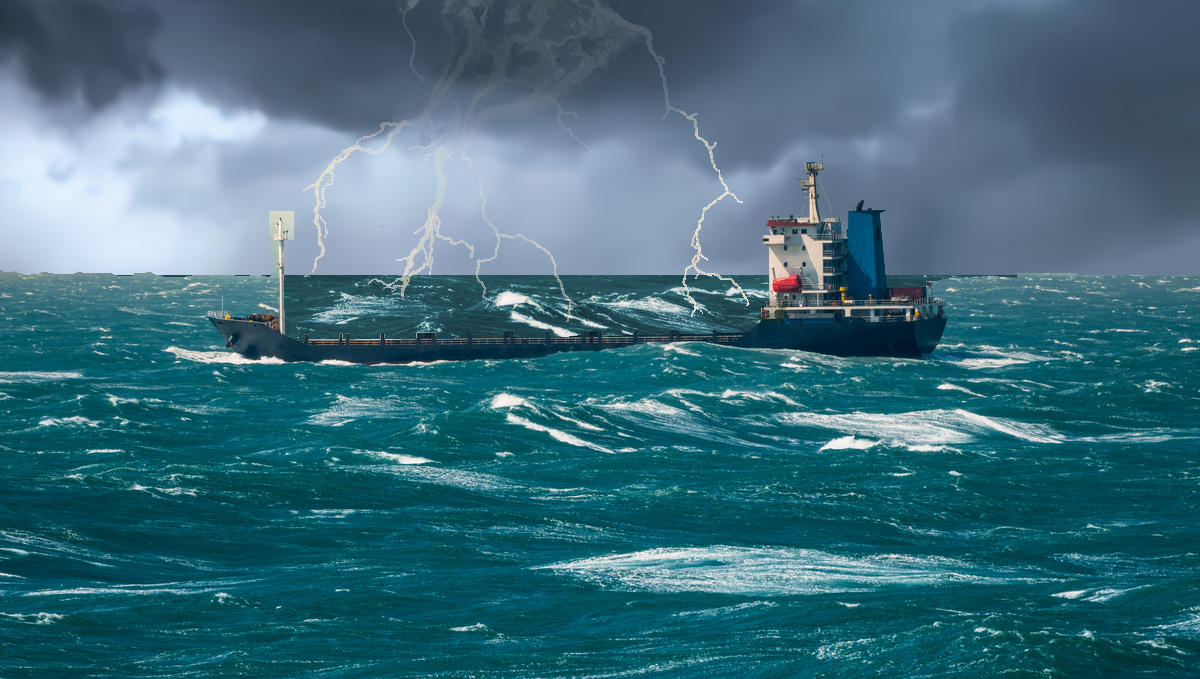The world’s oceans have been a vital part of global trade since humans first launched ships from shore. Today, nearly 90 per cent of global trade is carried by sea-going vessels. As a result, maritime shipping lies at the very heart of the global logistical system. In Part One of this article, I discussed emerging and ongoing security threats affecting maritime trade. In this concluding article, I want to discuss how climate change risks are adding to challenges faced by shipping firms and their clients. As I pointed out in the first part of this article, two of the world’s most vital maritime chokepoints — the Suez Canal and the Panama Canal — are experiencing serious challenges. Journalist Andrew Freedman explains, “Geopolitical risks in the Red Sea and extreme weather in Central America are converging, jostling global supply chains fed by the Suez and Panama Canals.”[1]
Climate Risks
Panama Canal
I would venture to say that many people don’t realize that fresh water, rather than salt water, is used to fill the Panama Canal’s locks. Unfortunately. a severe drought, which began last year in Panama, is disrupting canal operations. The Associated Press reports, “Canal authorities attributed the drought to the El Niño weather phenomenon and climate change, and warned it was urgent for Panama to seek new water sources for both the canal’s operations and human consumption. The same lakes that fill the canal also provide water for more than 50% of the country of more than 4 million people.”[2] Panamanian authorities are understandably concerned about the situation for monetary reasons as well. According to Panama Canal Administrator Ricaurte Vásquez, “Dipping water levels could cost them between $500 million and $700 million in 2024, compared to previous estimates of $200 million.”[3] The Associated Press notes, “[The drought] has stirred chaos in the 50-mile (80-kilometer) maritime route, causing a traffic jam of vessels, casting doubts on the canal’s reliability for international shipping and raising concerns about its effect on global trade.”
How bad have things become? In January Panamanian authorities slashed Panama Canal ship crossings by 36%. Vásquez told the Associated Press, “In the first quarter of the fiscal year, the passageway saw 20% less cargo and 791 fewer ships than the same period the year before.” Will things get worse? Maybe. Journalist Elida Moreno reports, “The Panama Canal sees no need for further vessel transit restrictions until at least April, when its authority will evaluate water levels at the end of the dry season.”[4] If the drought doesn’t end in May, further reductions (probably one or two ships/day) will likely be made and the draft of ships coming through the canal will also be reduced from 44 feet to 43 feet.
The editorial board at The Washington Post points out, “This is not just Panama’s problem. Drought in the Amazon rainforest this fall congested river shipping routes and threatened Brazil’s agricultural economy. Germany has proposed dredging parts of the Rhine after the worst drought to hit Europe in 500 years depressed water levels in 2022 and forced ships to sail at only 25 percent of capacity. The historic drought that afflicted the Mississippi, which carries nearly 500 million tons of cargo per year, required dredging of shipping channels to keep the barges moving.”[5]
Rising Seas
Obviously. maritime trade can’t take place if ports are not available and climate change is poised to have a significant impact on ports. The staff at Float Europe explains, “As the world grapples with the escalating impacts of climate change, rising sea levels are emerging as a critical concern. This global phenomenon poses an imminent threat to numerous sectors, particularly seaports, that play an indispensable role in international trade and the global economy. These vital infrastructures, handling billions of tons of cargo annually, face significant risks from various global warming scenarios, including extreme weather events and rising sea levels.”[6] They conclude, “The risks associated with climate change extend far beyond Europe’s shores; Mediterranean ports may not experience much direct impact from rising sea levels but could face considerable indirect impacts due to disruptions in Northern European ports, which serve as major nodes in their supply chains. Similarly affected would be East US coastlines and Brazil, along with traffic transiting the Panama Canal, potentially leading to widespread complications for global trade networks if adequate steps towards resilience aren’t taken soon enough in response to this looming crisis posed by climate change.”
The Global Maritime Trends 2050 report, commissioned last year by Lloyd’s Register and published by the independent charity arm Lloyd’s Register Foundation, concluded, “Some of the world’s largest ports may be unusable by 2050 as rising sea levels hit operations.”[7] A Lloyd’s Register spokesperson observed, “Of the world’s 3,800 ports, a third are located in a tropical band vulnerable to the most powerful effects of climate change.”
Intensifying Storms
Because so much of the world is covered by water, the world’s oceans generate most of the weather patterns we see. As the oceans warm, the intensity of weather patterns is increasing. A few years ago, a study published by NASA concluded, “Warming of the tropical oceans due to climate change could lead to a substantial increase in the frequency of extreme rain storms by the end of the century.”[8] Ask any sailor who has spent time on the open ocean and they will recount the terrors of dealing with rough seas. Shipping containers are often lost overboard during rough seas. And, of course, extreme weather, such as hurricanes, can cripple port operations. Climate journalist Scott Dance reports, “When meteorologists began using the five-step Saffir-Simpson scale to measure hurricane intensity in the 1970s, a Category 5 storm represented oblivion. Such a cyclone, with sustained winds of at least 157 mph, could flatten any structure of the era, so there was no reason to give the most ferocious tier of hurricanes an upper bound. But as the planet warms, storms are increasingly surpassing what was once considered extreme. … Now, two scientists are proposing a new label they say a growing number of storms already merit: Category 6.”[9] By all measures, the intensity of weather events, both at sea and ashore, are likely to increase and, when they do, supply chains will be adversely affected.
Concluding Thoughts
The Washington Post‘s editorial board concludes, “It might seem callous to worry about the impact of climate change on global trade. Drought is causing no end of human suffering; Just in the Horn of Africa, 23 million people were severely food-insecure at the end of 2022 because of drought. Droughts, storms and floods forced nearly 33 million people to migrate that year. And yet it would be foolhardy to ignore the impact of a changing climate on the driving forces of globalization. Threats to global growth will make it harder to address the plight of the most vulnerable. An impaired world economy will be hard-pressed to respond to poverty and hunger.” It is unlikely the world will do enough to prevent further climate change. That means both public and private sector organizations need to do more to adapt to extreme weather conditions whether they be at sea or ashore.
Footnotes
[1] Andrew Freedman, “Climate change and conflict converge to disrupt supply chains,” Axios, 24 January 2024.
[2] Staff, “Panama Canal traffic cut by more than a third because of drought,” The Associated Press, 19 January 2024.
[3] Ibid.
[4] Elida Moreno, “Exclusive: Panama Canal does not plan transit restrictions at least until April,” 7 February 2024.
[5] Editorial Board, “A dry Panama Canal shows how climate change will scramble globalization,” The Washington Post, 25 January 2024.
[6] Float Europe, “The impacts of rising sea levels on the world’s ports,” Innovation News Network, 15 December 2023.
[7] Jonathan Saul, “Top global ports may be unusable by 2050 without more climate action, report says,” Reuters, 7 September 2023.
[8] Esprit Smith, “Warming seas may increase frequency of extreme storms,” NASA, 28 January 2019.
[9] Scott Dance, “Hurricanes are getting so intense, scientists propose a Category 6,” The Washington Post, 5 February 2024.










